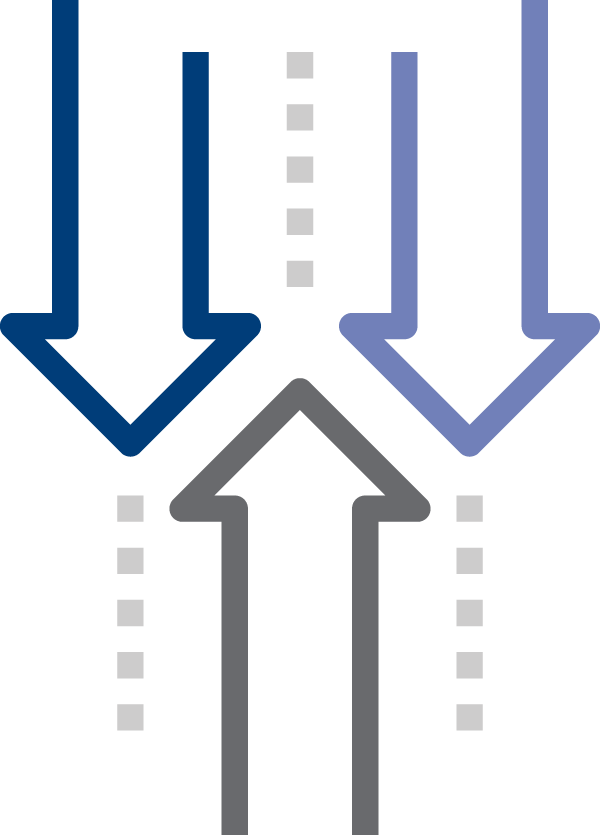By Keith Daniels, Managing Partner

The New York Federal Reserve reported a 50 percent increase in credit card delinquencies in 2023, noting a 59 percent jump from the end of 2022 to the end of 2023. Holiday sales numbers demonstrate that consumers have not stopped spending but rather are delaying payment to a later date, gaming the system by utilizing increasingly popular buy now, pay later (BNPL) shopping options to stretch their dollars further. Younger consumers, including Generation Z and Millennials, who now account for more than 40 percent of the U.S. population, seemed to fall particular victim to this new trend, with survey results revealing that two-thirds of Gen Z and Millennials recognized that they would go into debt as a result of their holiday spending.
As this debt comes due, consumers are likely to cut costs on big-ticket items to afford necessities such as gas, groceries, and utilities. For consumer packaged goods (CPG) companies, now more than ever, it is important to find ways to differentiate themselves from the competition to ensure customers under financial strain are not lost to competitors.

Pressure on the Middle Market
In addition to the growing mountain of consumer debt and the resulting tightening of consumer purse strings regarding “nice to have” items, the market consolidation of CPG giants, like the expected Kroger-Albertsons merger and the recent J.M. Smucker Co.’s acquisition of Hostess Brands, has made it increasingly difficult for middle-market companies to compete with megabrands. Mergers in the CPG industry tend to be inconsistent in their impact on pricing, creating periods of uncertainty for both consumers and smaller CPG companies. Kroger’s recent promise to lower prices following its merger with Albertsons has the potential to result in fewer players occupying a greater market share and exerting greater control over industry dynamics, forcing smaller companies to adapt or be left behind.
Inflationary pressures have also not done CPG brands any favors. Although improving, as of March 31, 2024, the US Core Inflation Rate remains higher than the long-term average, at 3.80 percent. Further, food inflation has recently driven share of wallet to 11.3%, a 30 year high. In times of increased economic stress, CPG companies are often the first to see consumer pull-back, with budget-conscious consumers forced to consider swapping more expensive go-to items for alternatives at a lower price point. As consumers struggle to maintain existing spending habits, this effect is being felt by many CPG companies.
It is also impossible to ignore the resounding impact the COVID-19 pandemic has had on the industry. Consumers spend very differently now than they did four years ago, partly due to an increased sense of financial vulnerability. Following steep reductions in the workforce during the early days of the pandemic and increased economic insecurity among affected populations, consumers have adopted a more conservative approach, cutting back on discretionary spending wherever possible.

Navigating Changing Consumer Habits
While it remains to be seen how 2024 will play out, it is clear financial doubt and vulnerability will remain while the macroeconomic conditions continue to squeeze the consumer. CPG companies will need to respond and adapt to stay competitive despite general uncertainty. Here are some strategies that middle-market CPG companies should consider:
- Adapting to oversaturation of the market. The rise of the omnichannel experience and increased market share of online retailers like Amazon have created an environment where it is difficult to stand out. CPG companies prioritizing digital innovation and customer experience will have an easier time attracting and retaining consumers than those that do not.
- Competing with the surge in private labels. Private labels, such as Great Value by Walmart or Target’s up&up, have grown rapidly in popularity in recent years. Beholden to lower manufacturing costs and with more flexibility in pricing, private labels can spell serious trouble for “brand name” CPG products. Focusing on building trust in your brand and product’s effectiveness or quality can help convince the average consumer that your product is worth the extra spend.
- Leveraging technology. Companies need to find ways to invest in technology that generates more efficiency. Employees have experienced an increase in their negotiating position over the past few years due to low unemployment, resulting in wage inflation. Opportunities for automation can alleviate worker shortages and these cost pressures. Also, leveraging AI can help companies better target their messages to their ideal consumer.
With consumers going deeper into debt, inflation rates being above average, and an expected increase in CPG mergers creating the potential for uncertain pricing, the industry is poised for intense change. Success will depend on each company’s ability to adapt and stand out from its competition. The crucial decisions made over the course of the year will shape their future in a retail environment that continues to evolve at an unprecedented pace.
